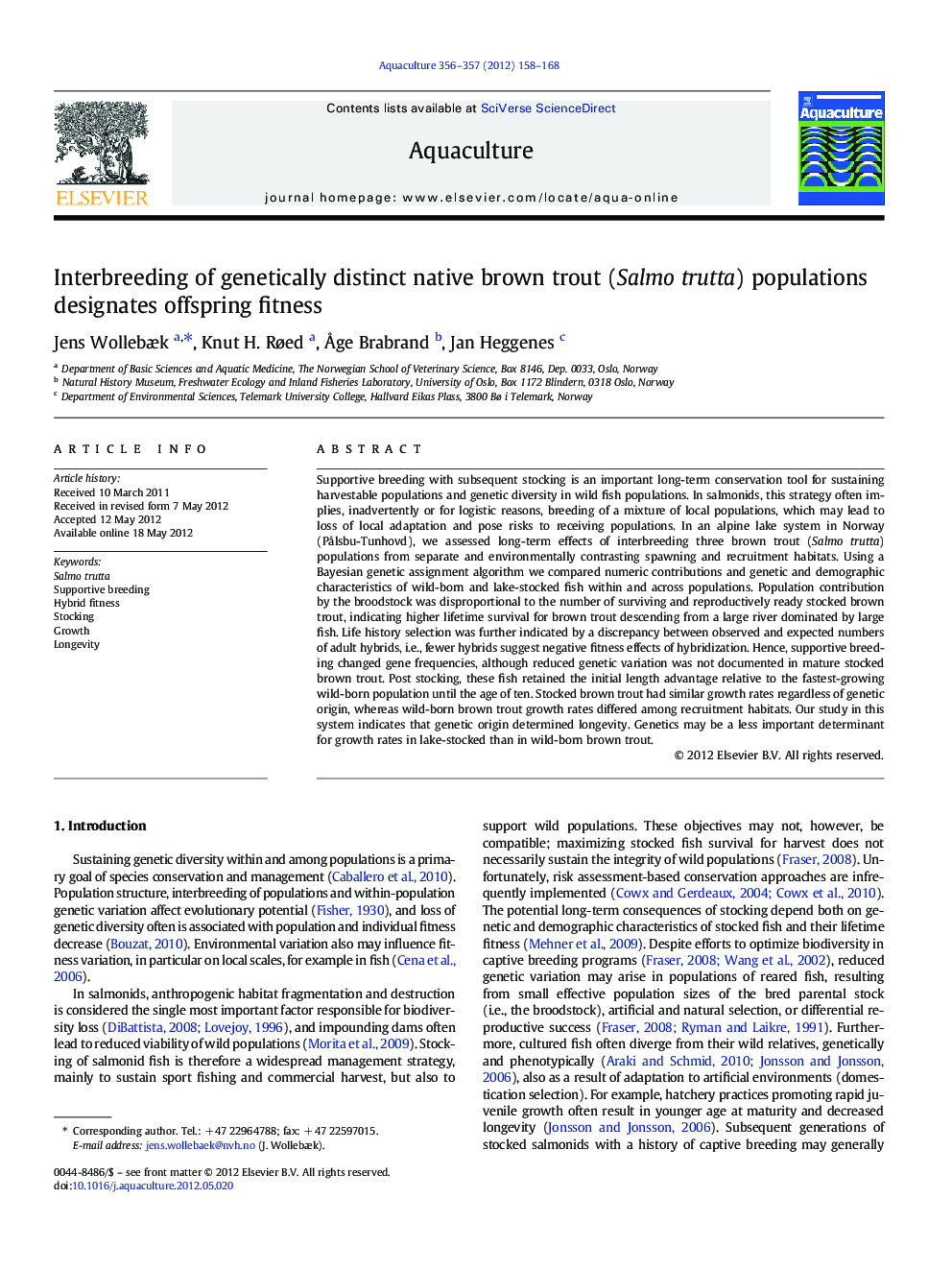| کد مقاله | کد نشریه | سال انتشار | مقاله انگلیسی | نسخه تمام متن |
|---|---|---|---|---|
| 2422562 | 1552888 | 2012 | 11 صفحه PDF | دانلود رایگان |

Supportive breeding with subsequent stocking is an important long-term conservation tool for sustaining harvestable populations and genetic diversity in wild fish populations. In salmonids, this strategy often implies, inadvertently or for logistic reasons, breeding of a mixture of local populations, which may lead to loss of local adaptation and pose risks to receiving populations. In an alpine lake system in Norway (Pålsbu-Tunhovd), we assessed long-term effects of interbreeding three brown trout (Salmo trutta) populations from separate and environmentally contrasting spawning and recruitment habitats. Using a Bayesian genetic assignment algorithm we compared numeric contributions and genetic and demographic characteristics of wild-born and lake-stocked fish within and across populations. Population contribution by the broodstock was disproportional to the number of surviving and reproductively ready stocked brown trout, indicating higher lifetime survival for brown trout descending from a large river dominated by large fish. Life history selection was further indicated by a discrepancy between observed and expected numbers of adult hybrids, i.e., fewer hybrids suggest negative fitness effects of hybridization. Hence, supportive breeding changed gene frequencies, although reduced genetic variation was not documented in mature stocked brown trout. Post stocking, these fish retained the initial length advantage relative to the fastest-growing wild-born population until the age of ten. Stocked brown trout had similar growth rates regardless of genetic origin, whereas wild-born brown trout growth rates differed among recruitment habitats. Our study in this system indicates that genetic origin determined longevity. Genetics may be a less important determinant for growth rates in lake-stocked than in wild-born brown trout.
► Supportive breeding changes gene frequencies.
► Admixture in breeding selects for specific life histories.
► Fitness of stocked brown trout relates to genetic origin.
► Hybrids express environmental specific low fitness.
Journal: Aquaculture - Volumes 356–357, 1 August 2012, Pages 158–168